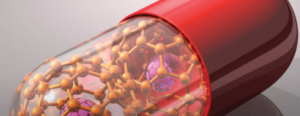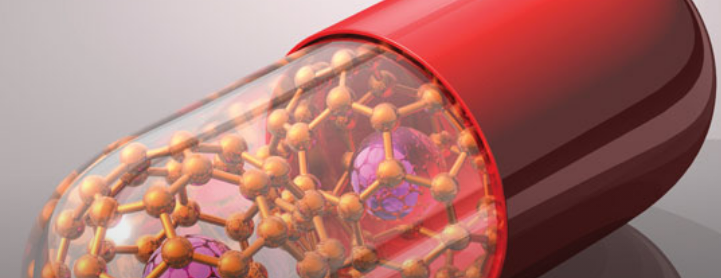In the rapidly evolving world of nanotechnology, one metal has emerged as a cornerstone of innovation: titanium. Known for its impressive physical and chemical properties, titanium is now making significant strides in the realm of nanomedicine—a cutting-edge field that merges nanotechnology with medical science to diagnose, treat, and even prevent diseases at the molecular and cellular levels.
Titanium, particularly in the form of titanium dioxide nanoparticles (TiO₂ NPs) and titanium-based nanostructures, is helping scientists and medical researchers develop smarter, more targeted, and less invasive therapeutic solutions. From cancer treatments to biosensors and antimicrobial coatings, titanium is opening new doors in the world of precision medicine.
This article explores how titanium is revolutionizing nanomedicine, its key applications, and what the future holds for this remarkable material in healthcare innovation.
Understanding Titanium’s Role in Nanomedicine
Titanium’s versatility in nanomedicine stems from its biocompatibility, chemical stability, photocatalytic activity, and ease of surface modification. These attributes make it ideal for creating nanomaterials that can interact safely and effectively with biological systems.
Why Titanium is Ideal for Nanomedical Applications:
- Non-toxic and biocompatible for human cells
- High surface area for drug loading and targeted delivery
- Photocatalytic properties enable light-activated therapies
- Stable and inert, reducing risk of undesirable reactions
- Easily modified with targeting ligands, polymers, or bioactive molecules
As a result, titanium is now a go-to material in the development of advanced drug delivery systems, diagnostic tools, and therapeutic agents.
Titanium Dioxide Nanoparticles: The Powerhouse of Nanomedicine
Among all titanium-based nanomaterials, titanium dioxide nanoparticles (TiO₂ NPs) are the most widely researched and applied in nanomedicine.
Key Applications of TiO₂ NPs:
1. Targeted Drug Delivery
TiO₂ nanoparticles can be functionalized to carry therapeutic agents directly to diseased cells—minimizing damage to healthy tissue and reducing side effects.
- Smart drug release mechanisms activated by pH, enzymes, or light
- Targeted delivery to tumors, inflamed tissues, or infected cells
- Customizable surfaces for site-specific delivery
2. Photodynamic Therapy (PDT)
Due to their photocatalytic nature, TiO₂ NPs can produce reactive oxygen species (ROS) when exposed to ultraviolet or visible light. These ROS can selectively destroy cancer cells, bacteria, or viruses.
- Non-invasive treatment for skin cancer and superficial tumors
- Effective against antibiotic-resistant microbes
- Minimal impact on surrounding healthy tissue
3. Imaging and Diagnostics
Titanium-based nanostructures are being explored as contrast agents in imaging technologies like MRI, CT scans, and fluorescence imaging.
- Enhanced resolution and accuracy in tumor detection
- Real-time tracking of drug delivery and cell behavior
- Integration with biosensors for early disease detection
Titanium in Cancer Nanotherapy
Cancer treatment is one of the most promising areas for titanium nanomaterials. Traditional therapies like chemotherapy and radiation often harm healthy cells and lead to severe side effects. Titanium-based nanocarriers offer a smarter solution.
How Titanium Aids in Cancer Treatment:
- Selective targeting of cancer cells via surface ligands (e.g., folic acid)
- Stimuli-responsive systems that release drugs only within tumors
- Combination of drug delivery + photodynamic therapy for enhanced results
Researchers are now working on multifunctional nanoplatforms using titanium that integrate diagnosis, treatment, and monitoring—often referred to as theranostics.
Antimicrobial and Wound Healing Applications
Titanium’s natural antibacterial properties are amplified at the nanoscale, making it a key player in infection control and wound management.
Benefits in Antimicrobial Treatments:
- TiO₂ NPs produce ROS that destroy microbial membranes
- Effective against a wide range of pathogens, including MRSA
- Can be incorporated into wound dressings, surgical masks, and implant coatings
Wound Healing:
Titanium-based nanomaterials can promote cell regeneration and enhance healing through the delivery of growth factors, oxygen, or antimicrobial agents.
- Accelerated tissue repair
- Reduced risk of infection
- Improved healing outcomes in diabetic and chronic wounds
Titanium Nanostructures in Regenerative Medicine
Titanium is also gaining attention in regenerative medicine, especially in bone and tissue engineering. Nanostructured titanium scaffolds mimic the extracellular matrix, supporting the growth and differentiation of cells.
Applications:
- Bone grafts and orthopedic implants with nanotextured surfaces
- Nanocoatings on titanium implants to improve osseointegration
- Engineered surfaces that stimulate stem cell differentiation
These advances lead to better integration of implants with the body, reducing the chances of rejection or complications post-surgery.
Biosensors and Wearable Nanodevices
Titanium nanomaterials are being used to develop biosensors that detect diseases at an early stage—often before symptoms appear.
Use Cases:
- Glucose monitoring for diabetes
- Detection of biomarkers for cancer or cardiovascular disease
- Real-time health tracking via smart tattoos or wearables
Thanks to their high sensitivity and stability, titanium-based sensors offer more reliable and long-lasting health monitoring solutions.
Challenges and Considerations
While titanium’s potential in nanomedicine is immense, several challenges remain:
- Toxicity concerns at high concentrations or prolonged exposure
- Limited absorption of UV light in deeper tissues (affecting PDT)
- Need for standardized production and regulation of nanomaterials
Ongoing research is focused on improving biodegradability, functionalization, and long-term biocompatibility of titanium-based nanostructures.
The Future of Titanium in Nanomedicine
Titanium’s role in nanomedicine is only expected to grow, driven by advancements in:
- Multifunctional nanoplatforms combining therapy, imaging, and diagnostics
- Artificial intelligence integration for personalized treatment
- Next-gen implants that self-report infection or inflammation
- Green synthesis methods for environmentally sustainable production
As these developments mature, titanium will help usher in a new era of precision medicine, where treatments are tailored to individual patients with minimal side effects and maximum efficacy.
Conclusion: A Titanium-Powered Medical Revolution
Titanium has long been admired in aerospace, military, and medical implants—but its nanomedical potential is rewriting the rules of modern healthcare. With its ability to deliver drugs precisely, destroy disease-causing cells with light, and support tissue regeneration, titanium is at the forefront of next-generation therapeutic technologies.
As researchers continue to explore its vast capabilities, one thing is clear: titanium is not just a metal—it’s a catalyst for healing, innovation, and the future of medicine. Whether combating cancer, preventing infections, or guiding precision therapies, titanium is truly making waves in the field of nanomedicine.

Also Read :
